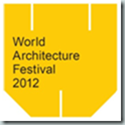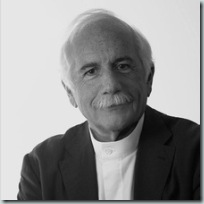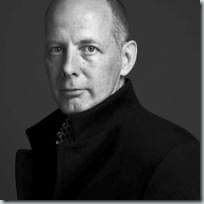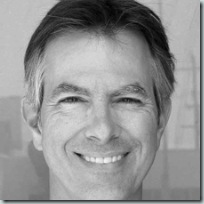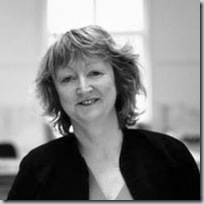Asistir a la WAF todos los años como Media Partner es un placer que se traduce en un mejor entendimiento de lo que esta sucediendo en el panorama internacional de la arquitectura. Este año se ha celebrado en Singapur los días 2 al 5 de Octubre del 2012.
Nos encontramos con un plantel intensivo de speekers, jurados, proyectos, concursos… toda una base de networking, eventos, recepciones, etc. Una concentración abundante que bien merece este número y que nos permitimos complementar con una base y biblioteca de gráficos de alta calidad para incorporarlos a nuestra biblioteca digital eArquitectura
WAF attend every year as Media Partner is a pleasure which results in a better understanding of what is happening in the international architecture. This year was held in Singapore from 2 to 5 October 2012.
We find a intensive speekers campus, juries, projects, contests … a networking base, events, receptions, etc.. An abundant concentration that deserves this number and that we would supplement with a base and library of high-quality graphics to incorporate into our digital library eArquitectura
Awards – Category Winners – 4th October 2012
Judges 2012
Our judging panels are international and comprise architects, allied professionals, clients and critics. The World Architecture Festival is an opportunity for peer review by some of the most distinguished professionals in the world.
2012 Super Jury
Moshe Safdie
Ben Van Berkel
Neil Denari
Juergen Mayer H
Mok Wei Wei
Yvonne Farrell
Shearer’s Quarter wins World’s Best Villa at World Architecture Festival Awards 2012
Historical considerations and unusual materials wow judges
Shearer’s Quarter on North Bruny Island, Australia, designed by John Wardle Architects, has won the ‘World’s Best Villa’ Award at the prestigious World Architecture Festival (WAF) Awards 2012.
The judging of the WAF Awards is taking place during the largest global celebration of architecture – the World Architecture Festival, which is being held at the Marina Bay Sands in Singapore this week.
The Shearer’s Quarters is located on ‘Waterview’, an historic farming property on North Bruny Island on land first granted to Captain James Kelly in 1840. The property is a working sheep farm of 440 hectares that has been operated by the one family for 10 years. The priority has been the rejuvenation of the landscape with over 150 hectares reserved for conservation purposes and over 6,000 indigenous trees planted. The form transforms along its length to shift the profile of a slender skillion at the western end to a broad gable at the east. The geometry of this shift is carried through to the layout of internal walls, lining boards and window frames.
The building was selected by a jury of some of the world’s most dynamic architectural and urban designers. It overcame competition from a shortlist of 15 entries.
The jury commended the project, saying: “This project has distinguished itself from the competition because it reflects the in-depth research undertaken by the designers of the history and physical specificity of its site and region. This results in a deceptively simple, spatial and three-dimensional internal outcome. It has also meant that the building has incorporated unusual materials that were recycled from the building’s previous use. Lastly the house forms both an extension of the existing historic residence and a mediator between it and the bay beyond.”
Also commended in the category were Geneses House, Brazil, designed by Isay Weinfeld, and Waterberg Observatory, South Africa, designed by Silvio Rech and Lesley Carstens.
High Resolution Picture
T-Site wins World’s Best Shopping Centres Building at World Architecture Festival Awards 2012
Merging the worlds of new and old media
T-Site, Japan, designed by Klein Dytham Architects, has won the ‘World’s Best Shopping Centres’ Award at the prestigious World Architecture Festival (WAF) Awards 2012.
The judging of the WAF Awards is taking place during the largest global celebration of architecture – the World Architecture Festival, which is being held at the Marina Bay Sands in Singapore this week.
Daikanyama T-Site is a village-like complex for Tsutaya, a giant in Japan’s book, music, and movie retail market. Located in Daikanyama, an up-market but relaxed, low-rise Tokyo shopping district, it stands alongside a series of buildings designed by Pritzker Prize-winning architect Fumihiko Maki. The project draws on a host of design skills including architecture, interior, furniture and visual merchandising display. The project’s ambition is to define a new vision for the future of retailing. Tailored particularly to the over-50 “premier age” customers, Tsutaya’s normal product range is complimented by a series of boutique spaces carrying carefully curated merchandise.
The building was selected by a jury of some of the world’s most dynamic architectural and urban designers. It overcame competition from a shortlist of 5 entries.
The jury commended the project, saying “T-Site proposes a new direction combining retail with a social experience, and integrating on-line retail with a tactile, physical experience. With its beautifully resolved form the design balances efficient use of space with an impressive garden experience.”
High Resolution Picture
Stacking Green wins World’s Best House at World Architecture Festival Awards 2012
Flower-pot custom inspires unique, tropical tube house in Saigon
Stacking Green, Vietnam, designed by Vo Trong Nghia Architects, has won the ‘World’s Best House’ award at the prestigious World Architecture Festival (WAF) Awards 2012.
The judging of the WAF Awards is taking place during the largest global celebration of architecture – the World Architecture Festival, which is being held at the Marina Bay Sands in Singapore this week.
The house, designed for a thirty-years-old couple and their mother, is a typical tube house constructed on the plot 4m wide and 20m deep. The front and back façades are entirely composed of layers of concrete planters cantilevered from two side walls. The distance between the planters and the height of the planters are adjusted according to the height of the plants, which varies from 25 cm to 40 cm. An automatic irrigation pipe waters the plants for easy maintenance. Named “Stacking Green” for its façades filled with vigorous and vital greenery the house has an RC frame structure widely used in Vietnam.
The building was selected by a jury of some of the world’s most dynamic architectural and urban designers. It overcame competition from a shortlist of 16 entries.
The jury commended the project saying, “Stacking House offers a holistic piece of architecture with great clarity of vision and strong, memorable iconography. Lush, widescreen architecture at its best, the structure provides a simple yet elegant solution to challenges in developing cities including security, privacy, climate and light in poetic yet economical way while exhibiting a single, unpretentious use of materials.”
High Resolution Picture
Salorge / Town Community wins World’s Best Civic and Community Building at World Architecture Festival Awards 2012
Project undertaken for Pornic’s politicians awarded prize for sympathetic reinvention
Salorge / Town Community in Pornic, France, designed by Arcau, has won the ‘World’s Best Civic and Community ’ award at the prestigious World Architecture Festival (WAF) Awards 2012.
The judging of the WAF Awards is taking place during the largest global celebration of architecture – the World Architecture Festival, which is being held at the Marina Bay Sands in Singapore this week.
Arcau responded of Pornic’s elected representative’s brief in which they expressed their “deep-rooted” commitment to regional tradition. This meant that the architects immediately had to exclude any other architectural form that did not match the traditional volumes and templates of the Pays de Retz, such as roofs with gable roofs, covered in tiles.
The building was selected by a jury of some of the world’s most dynamic architectural and urban designers. It overcame competition from a shortlist of 14 entries.
The jury commended the project, saying:
“Starting with a boring brief in a boring suburban context, the site was transformed by a beautifully simple suggestion without forcing an agenda. It is unique to its context due to respecting a local archetype i.e. it could not be anywhere else unlike a lot of other projects in the category. The architects have made something out of nothing, from a discrete solution for sustainability to have to deal with a low budget.”
High Resolution Picture
Liyuan Library wins World’s Best Culture Building at World Architecture Festival Awards 2012
Library on the outskirts of Beijing commended for respectful design to enhance appreciation of nature
Liyuan Library, Beijing, China, designed by Li Xiadong Atelier, has won the ‘World’s Best Culture Building’ award at the prestigious World Architecture Festival (WAF) Awards 2012.
The judging of the WAF Awards is taking place during the largest global celebration of architecture – the World Architecture Festival, which is being held at the Marina Bay Sands in Singapore this week.
The Liyuan Library is a modest addition to the small village of Huairou on the outskirts of the Beijing. The project forms a modern complement to the village by adding a small library and reading space, yet it uses the architecture to enhance appreciation of the surrounding natural landscape. The local material characteristics of the village were considered, and locally-sourced wooden sticks were used to clad the building in textures familiar to the location. The inside of the building also has an expressive character, with a spatially diverse interior which used steps and small level changes to create distinct places.
The building was selected by a jury of some of the world’s most dynamic architectural and urban designers. It overcame competition from a shortlist of 15 entries.
The jury commended the project, saying “This simple yet inventive work is carefully respectful of the nature surrounding it, which works very well for community. It is very beautiful and sensitive, and at the same time properly sustainable.”
High Resolution Picture
Cooled Conservatories at Gardens by the Bay wins World’s Best Display Building at World Architecture Festival Awards 2012
Largest climate-controlled glasshouses in the world help transform Singapore into a ‘City in a Garden’
Cooled Conservatories at Gardens by the Bay, Singapore, designed by Wilkinson Eyre, has won the ‘World’s Best Display’ award at the prestigious World Architecture Festival (WAF) Awards 2012.
The judging of the WAF Awards is taking place during the largest global celebration of architecture – the World Architecture Festival, which is being held at the Marina Bay Sands in Singapore this week.
Located in Marina Bay, Gardens by the Bay is a key project in delivering the Singapore
Government’s vision of transforming Singapore into a ‘City in a Garden’. At a total of 101 hectares, the Gardens by the Bay project comprises three distinct waterfront gardens – Bay South, Bay East and Bay Central. The commission to design the 54 hectare Bay South garden was won in 2006 by a team led by Grant Associates and including Wilkinson Eyre Architects, Atelier One, Atelier Ten, Land Design and Davis Langdon and Seah.
The building was selected by a jury of some of the world’s most dynamic architectural and urban designers. It overcame competition from a shortlist of 9 entries.
The jury commended the project, saying “The ambitious project from a fully integrated team is awe-inspiring in its scale and form, and sets a new standard for ecological and environmental design. Iconic without a signature architect, the judges were impressed by this team effort, as well as the ingenious use of tree cuttings as an energy source.”
High Resolution Picture
The Royal Children’s Hospital wins World’s Best Health Building at World Architecture Festival Awards 2012
Innovative and integrated design helps project overcome the usual stigmas attached to Hospitals
The Royal Children’s Hospital in Melbourne, Australia designed by Billard Leece Partnership and Bates Smart, has won the ‘World’s Best Health Building’ Award at the prestigious World Architecture Festival (WAF) Awards 2012.
The judging of the WAF Awards is taking place during the largest global celebration of architecture – the World Architecture Festival, which is being held at the Marina Bay Sands in Singapore this week.
The design of Melbourne’s $1 billion (AUD) Royal Children’s Hospital (RCH) is based on ‘state of the art’ ideas developed by the hospital around a family-centred care model that puts children and their parents at the centre of the tertiary level paediatric care facility. Using innovative and evidence-based design principles, the RCH reflects changing healthcare practices, workplace patterns, user expectations, community aspirations and environmental responsibility.
The building was selected by a jury of some of the world’s most dynamic architectural and urban designers. It overcame competition from a shortlist of five entries.
The jury commended the project, saying: “An innovative project in healthcare, which successfully overcame the stigmas often attached to hospitals. It blends with the surrounding environment whilst at the same time being a demonstration of iconic architecture. Everything is well-integrated, from architecture to furnishing, and even pieces of art and medical equipment.”
High Resolution Picture
Central Saint Martins wins World’s Best Higher Education and Research Building at World Architecture Festival Awards 2012
Mixed-use quarter commended for excellent execution and sensitive connection of old and new
University of Arts London Campus for Central Saint Martins at King’s Cross, London, United Kingdom, designed by Stanton Williams, has won the ‘World’s Best High Education and Research Building’ Award at the prestigious World Architecture Festival (WAF) Awards 2012.
The judging of the WAF Awards is taking place during the largest global celebration of architecture – the World Architecture Festival, which is being held at the Marina Bay Sands in Singapore this week.
To the north of King’s Cross and St Pancras International railway stations, 67-acres of derelict land are being transformed into a vibrant mixed-use quarter, at the physical and creative heart of which will be the new University of the Arts London campus, home of Central Saint Martins College of Arts and Design. The design aims to maximise the connections between departments within the building, with student and material movement being considered 3-dimensionally, as a flow diagram North to South, East to West and up and down, similar in many ways to how the grain was historically distributed around the site using wagons and turntables. Great importance has been placed on ensuring the new campus embodies best practice in sustainable design, overcoming the constraints of a listed industrial structure and ensuring the building design allows maximum scope for adaptation.
The building was selected by a jury of some of the world’s most dynamic architectural and urban designers. It overcame competition from a shortlist of 9 entries.
The jury commended the project, saying “The project was complex and challenging but very well executed, showcasing a sensitive relationship between old buildings and new volumes. The central street which connects the various spaces helps create better integration.”
High Resolution Picture
Victoria Tower wins World’s Best Hotel & Leisure Building at World Architecture Festival Awards 2012
Stockholm icon offers refreshing originality
Victoria Tower, Sweden, designed by Wingårdh Arkitektkontor has won the ‘World’s Best Hotel & Leisure’ award at the prestigious World Architecture Festival (WAF) Awards 2012.
The judging of the WAF Awards is taking place during the largest global celebration of architecture – the World Architecture Festival, which is being held at the Marina Bay Sands in Singapore this week.
As one of the tallest buildings in Stockholm, Victoria Tower stands out among its neighbors and acts as an icon of the surrounding area. Situated between Stockholm proper and the city airport, the tower serves a nearby office park with conference and office facilities, as well as providing a 229 room hotel. The tessellated façade of the building is clad entirely in colored glass, though in actuality two-thirds of the walls are fully insulated. This allows the tower to appear as a colorful prism in its geometry and materiality while meeting the needs for energy conservation. The tower has a parallelogram-shaped plan for floors 2–21, which is comprised of the hotel rooms, while the upper floors are rectangular, delineating the office spaces and a roof bar.
The building was selected by a jury of some of the world’s most dynamic architectural and urban designers. It overcame competition from a shortlist of 14 entries.
Domenic Alvaro, who served on the judging panel, commented, “This was a high level of ambition for an urban solution and one that was refreshingly original in a genre predominately saturated with sterile corporate hospitality. Victoria Tower offers simplicity of abstraction of scale of façade and resultant patternation creating a singular iconic scaleless object.”
High Resolution Picture
Martin No. 38 wins World’s Best Housing Building at World Architecture Festival Awards 2012
Apartment building commended for its careful planning that grows from location and climactic concerns
Martin No. 38, Singapore, designed by Kerry Hill Architects Pte Ltd, has won the ‘World’s Best Housing’ award at the prestigious World Architecture Festival (WAF) Awards 2012.
The judging of the WAF Awards is taking place during the largest global celebration of architecture – the World Architecture Festival, which is being held at the Marina Bay Sands in Singapore this week.
Martin Road No. 38 is a residential and commercial development located in a former warehouse area near to the Singapore River, close to the Singapore CBD. Seeking to design a building providing loft type spaces for young professionals who seek to live close to the heart of the city, yet who desire a refuge from their busy working lives, the apartments have been designed with open layouts, permitting alternative space usage and internal flexibility. A series of passive systems have been employed to reduce the energy consumption of the building. The design is orientated to the south and daylight penetrates deep in to the building to reduce the dependence on artificial lighting. All units are naturally cross-ventilated and in conjunction with the extensive facade of operable aluminium sun louvres, the internal spaces are kept cool.
The building was selected by a jury of some of the world’s most dynamic architectural and urban designers. It overcame competition from a shortlist of 16 entries.
The jury commended the project, saying, “Martin No. 38’s planning stems from its location and climactic concerns in a disciplined, simple and logical way. Its materials are simple yet refined, and seamlessly integrate. The architecture of the building has a remarkable clarity that is able to react to the changing nature of day and night, contributing to Singapore’s architectural heritage.”
Common Ground Sydney by HASSELL was also highly commended, and the jury said, “It showed a good mix of housing developments from around the world, its environmental and climate considerations becoming a common driver.”
High Resolution Picture
Plaza Espana in Adeje wins World’s Best New and Old Building at World Architecture Festival Awards 2012
A public square in the Canary Islands in Spain is rewarded for its transformation of a local amenity
Plaza Espana in Adeje, Spain designed by Menis Arquitectos SLP, has won the ‘World’s Best New and Old Building’ award at the prestigious World Architecture Festival (WAF) Awards 2012.
The judging of the WAF Awards is taking place during the largest global celebration of architecture – the World Architecture Festival, which is being held at the Marina Bay Sands in Singapore this week.
The designer’s concept for the plaza was to act as a nuclei of public and cultural life. The transformative project achieved this by removing buildings to open up an enlarged public plaza, allowing visitors to view the incredible landscape next to the site. It also added a subterranean museum to further enhance the space’s use as a public amenity.
The building was selected by a jury of some of the world’s most dynamic architectural and urban designers. It overcame competition from a shortlist of 16 entries.
The jury commended the project, saying:
“This project defines a new way for how the town appreciates its own identity and context, away from its role as a tourist destination. It is a bold response and solution that allows the un-obvious to become the obvious solution”
High Resolution Picture
Darling Quarter wins World’s Best Office Building at World Architecture Festival Awards 2012
Sydney office complex commended for its exemplary approach
corporate social responsibility
Darling Quarter in Sydney, Australia, designed by Francis-Jones Morehen Thorp, has won the ‘World’s Best Office Building’ award at the prestigious World Architecture Festival (WAF) Awards 2012.
The judging of the WAF Awards is taking place during the largest global celebration of architecture – the World Architecture Festival, which is being held at the Marina Bay Sands in Singapore this week.
Located between Darling Harbour and Tumbalong Park in Syndey, Darling Quarter features a series of defined public spaces, including a pedestrian boulevard, parklands, gateway, children’s playground, cafes and restaurants. Split at its centre, the new buildings frame and define a new pedestrian street, the Civic Connector, that links Darling Harbour South via Bathurst Street with Town Hall and the very centre of the City.
The building was selected by a jury of some of the world’s most dynamic architectural and urban designers. It overcame competition from a shortlist of 14 entries.
The jury commended the project, saying:
“We’ve seen some fantastic projects today, each with their own unique approach to the client’s brief. Darling Quarter’s exciting form and massing, incorporates an exemplary approach to corporate social responsibility, not only through features to reduce carbon emissions, but also in the way it has made its landscaped spaces accessible for the public.”
High Resolution Picture
Sony Corporation wins World’s Best Production Building at World Architecture Festival Awards 2012
Japanese electronics giant’s R&D facility rewarded for its environmental innovation
Sony Corporation in Japan designed by Nikken Sekkei, has won the ‘World’s Best Production Building’ award at the prestigious World Architecture Festival (WAF) Awards 2012.
The judging of the WAF Awards is taking place during the largest global celebration of architecture – the World Architecture Festival, which is being held at the Marina Bay Sands in Singapore this week.
The project is a building for Sony’s research & developement department, which takes the form of a thin vertical plate to ensure good views. More importantly, the form minimizes the heat island effect by positioning its narrow sides against prevailing winds, thus allowing the breeze to flow in from Tokyo Bay without hindrance.
The building was selected by a jury of some of the world’s most dynamic architectural and urban designers. It overcame competition from a shortlist of 5 entries. Elevators and stairways were placed on the western façade to block the strong afternoon sun. Protruding solar panels on the south elevation also work as shading devices, generating electricity while at the same time blocking out the heat. The eastern façade is covered with specialized ceramic louvers that guide rainwater through the system to act as enormous radiator for cooling the environment.
The jury commended the project, saying:
“This is an extremely well resolved high rise industrial building with considerable environmental innovation. We were impressed by the use of traditional materials for modern purposes. It is a very well executed scheme with a huge amount of detail quality.”
High Resolution Picture
Binh Duong School wins World’s Best School at World Architecture Festival Awards 2012
Spirit and nature of natural land embedded in S-Shape Vietnamese school
Binh Duong School, Vietnam, designed by Vo Trong Nghia Architects, has won the ‘World’s Best School’ Award at the prestigious World Architecture Festival (WAF) Awards 2012.
The judging of the WAF Awards is taking place during the largest global celebration of architecture – the World Architecture Festival, which is being held at the Marina Bay Sands in Singapore this week.
The building is located in 5300 square meters of abundant land, consisting of a maximum height of five levels, with the intention of being surrounded by the height of the surrounding forest. Pre-cast concrete louvers and pattern walls are used for the envelop of the building. These shading devices generate semi-outside space, and the open circumstances avoid direct sunlight as well as acting like a natural ventilation system for the corridor space. All the classrooms are connected by this semi-open space, where teachers and students converse and appreciate nature.
The building was selected by a jury of some of the world’s most dynamic architectural and urban designers. It overcame competition from a shortlist of 10 entries.
The jury commended the project, saying “A complex programme for 800 children was adeptly handled to create a series of humanely scaled spaces and places. Though built for a very modest budget, it has an architectural presence and lyricism in the way that light and air penetrate the interior. It embodies qualities of the best kind of effortless critical regionalism, reinterpreted for the current era.”
High Resolution Picture
Xtra – Herman Miller shop in shop wins World’s Best Shop at World Architecture Festival Awards 2012
Shop within a shop commended for its use of design and material to successfully express the Herman Miller brand.
Xtra – Herman Miller shop in shop, Singapore, designed by P.A.C, has won the ‘World’s Best Shop’ award at the prestigious World Architecture Festival (WAF) Awards 2012.
The judging of the WAF Awards is taking place during the largest global celebration of architecture – the World Architecture Festival, which is being held at the Marina Bay Sands in Singapore this week.
The Herman Miller shop within a shop in Xtra, located in Singapore, was inspired by Herman Miller’s core product, work chairs. Learning from the design processes of work chairs, which combines format, structural and material innovation based on the research of ergonomics, the Herman Miller store was designed to similarly “mould” to its host, Xtra.
The building was selected by a jury of some of the world’s most dynamic architectural and urban designers. It overcame competition from a shortlist of 5 entries.
The jury commended the project, saying, “It is a successful expression of the Herman Miller brand, combining natural materials with design and new technology. The contouring of the ceiling which becomes a wall successfully which becomes a wall successfully creates a series of warm spaces and a comfortable environment.”
High Resolution Picture
Fazenda Boa Vista Golf Club house wins World’s Best Sport Building at World Architecture Festival Awards 2012
Golf clubhouse commended for its simple elegance and flawless execution
Fazenda Boa Vista Golf Clubhouse, Brazil, designed by Isay Weinfeld, has won the ‘World’s Best Sport Building’ award at the prestigious World Architecture Festival (WAF) Awards 2012.
The judging of the WAF Awards is taking place during the largest global celebration of architecture – the World Architecture Festival, which is being held at the Marina Bay Sands in Singapore this week.
Fazenda Boa Vista is a 750-hectare residential and hospitality complex located in Porto Feliz, 100 km away from the city of São Paulo, in Brazil. Developed to serve golf players and enthusiasts of the two 18-hole golf courses on the complex, the clubhouse is developed in a building of 1,663 m2, solved in two very distinct blocks. The lower level is built in concrete and nestles in the downwards slope of the terrain as to extend the platform where part of the ground level is supported, housing the entertaining areas and the terraces. The ground level is composed of a light block and several open decks. Featuring mixed structure of metal and wood, enclosed by glass panes or masonry walls, the building is laid out as a sequence of interconnected rectangular spaces, partly over the lower-level landscaped slab, partly on the terrain.
The building was selected by a jury of some of the world’s most dynamic architectural and urban designers. It overcame competition from a shortlist of 5 entries.
The jury commended the project, saying, “The building had simple elegance and was beautifully executed, reinvestigating the ‘clubhouse’ typology. One of the three projects on the estate, the golf clubhouse was flawlessly carried out on a large masterplan.”
High Resolution Picture
Bodrum International Airport wins World’s Best Transport Building at World Architecture Festival Awards 2012
International airport commended for its careful detailing and unique identity
Bodrum International Airport, Turkey, designed by Tabanlioglu Architects, has won the ‘World’s Best Transport Building’ Award at the prestigious World Architecture Festival (WAF) Awards 2012.
The judging of the WAF Awards is taking place during the largest global celebration of architecture – the World Architecture Festival, which is being held at the Marina Bay Sands in Singapore this week.
Located in Turkey, Bodrum International Airport is a transition point between regional effects. The airport is 40km to Bodrum center and 8km to Gulluk which is the closest sea coast, and located between the present domestic and international terminals, parallel to the apron. The building consisting of two main structures, the “air side” and “land side” which provides an environment for passengers to be rid of the pressure and monotony of travelling, and at the same time, allows the airport to become a unique icon significant to the region it represents.
The building was selected by a jury of some of the world’s most dynamic architectural and urban designers. It overcame competition from a shortlist of 8 entries.
The jury commended the project, saying “The complexity of the airport brief is resolved with openness and clarity. The interior spaces and their careful detailing provide a unique identity to this building.”
Marina Bay Station by Aedas Pte Ltd was also highly commended, with a design that resolved many complex requirements of the brief to create a beautiful canopy in a parkland setting.
High Resolution Picture
Licencia CC 2.0 Compartir Igual-Share Same

